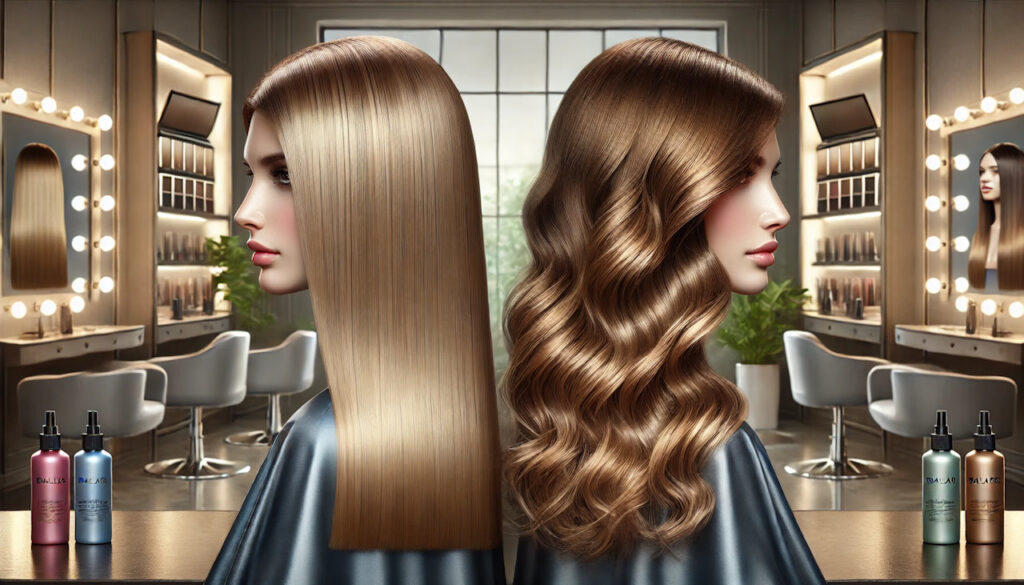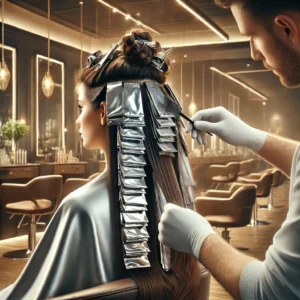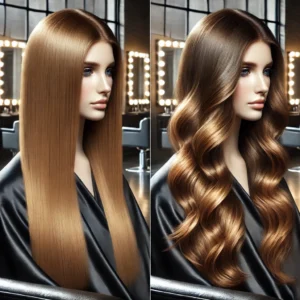Ultimate Guide to Selecting the Right Hair Highlighting Technique: Foiling vs. Balayage
When it comes to hair transformation, foiling and balayage stand out as two of the most popular hair highlighting techniques, each promising to elevate your overall appearance. Both methods are designed to add stunning highlights to your locks, yet they achieve this goal through distinctly different application methods and visual outcomes. Foiling is a meticulous process that involves wrapping selected strands of hair in foil after applying a lightener or dye, enabling remarkable precision in highlight placement. This technique is particularly favored by those looking for defined, vibrant results that catch the eye and enhance their hairstyle.
The accuracy achieved with foiling results in a polished and sophisticated look, making it ideal for individuals who desire a striking transformation or a bold contrast with their natural hair color. In contrast, balayage is a more artistic approach where the stylist hand-paints the color onto the hair, focusing primarily on the mid-lengths and ends while keeping the roots darker for a naturally sun-kissed effect. The signature seamless transitions of balayage often require less frequent touch-ups, making it a popular option for those who prefer a low-maintenance, lived-in style that evolves beautifully over time.
Understanding the key differences between these two techniques is crucial for making an informed decision that aligns with your personal aesthetic preferences and fits seamlessly into your lifestyle.

Key Considerations for Choosing Between Foiling and Balayage
- Foiling entails wrapping portions of hair in foil to achieve crisp, uniform highlights, while balayage utilizes a freehand technique that promotes a more organic, sun-kissed appearance.
- Foiling provides advantages such as consistent and controlled results and effective lightening of different hair shades; however, it can lead to noticeable regrowth and may create a more structured, less natural look.
- On the other hand, balayage is celebrated for its low-maintenance quality and smooth blending with your natural hair color. However, challenges may arise, including uneven color distribution and the need for regular touch-ups.
- For individuals with dark, thick, or coarse hair, foiling can be especially beneficial if you desire a bold, high-contrast effect that stands out.
- Conversely, balayage is often ideal for fine or thin hair, offering a subtle, blended effect that minimizes the visibility of regrowth.
- To keep foiled highlights vibrant, it’s essential to use color-safe products, limit excessive heat styling, and schedule regular touch-ups with your stylist.
- For balayage, using color-safe products, minimizing sun exposure, and arranging regular toning appointments with your stylist will help maintain the freshness and vibrancy of your look.
- When deciding between foiling and balayage, evaluate your preferred aesthetic, hair type, maintenance needs, and budget to make a well-informed choice based on the unique pros and cons of each technique.
 Uncovering the Benefits of Foiling: Why It’s a Preferred Choice for Many
Uncovering the Benefits of Foiling: Why It’s a Preferred Choice for Many
Foiling offers numerous compelling advantages that make it a top choice for those in search of vibrant, eye-catching highlights. One of the most significant benefits is its precision; each section of hair is carefully wrapped in foil, allowing for accurate color application exactly where it’s needed. This precision is particularly advantageous for individuals with darker hair who aim for significant lift or contrast without compromising on quality.
Beyond its precision, the uniform appearance achieved through foiling makes it an excellent selection for anyone wanting a polished and sophisticated finish. However, it’s essential to consider potential drawbacks of this technique. The foiling procedure can be time-consuming, often taking several hours, especially for those with long or thick hair. Additionally, the foils can trap heat, which accelerates the lightening process but may lead to hair damage if not managed carefully. If you maintain a busy lifestyle or prefer a more effortless hair care routine, you might find that foiling requires more commitment than you are willing to invest.
Understanding the Advantages and Limitations of Balayage
Balayage boasts a myriad of advantages that draw individuals seeking a more natural, effortless hairstyle. A standout feature of this technique is its low-maintenance quality. Since balayage highlights emulate the effects of natural sun exposure, they grow out gracefully, avoiding harsh lines or noticeable regrowth. This characteristic translates to fewer salon visits for touch-ups, making balayage an excellent choice for those with hectic schedules.
Nevertheless, it’s crucial to recognize that balayage may not provide the same level of intensity or contrast as foiling. If you desire bold, dramatic highlights, you might find that balayage does not deliver the vibrancy you seek. Moreover, the success of balayage heavily depends on the stylist’s skill and artistry. Therefore, choosing an experienced professional who can accurately interpret and execute your vision is essential to achieving your desired results.
Identifying Optimal Hair Types for Foiling Techniques
Foiling is particularly advantageous for specific hair types and textures. Individuals with thick or coarse hair can achieve vibrant highlights that stand out against their natural base color. The precision inherent in foiling allows for targeted color placement, enhancing the hair’s natural texture and dimension. Furthermore, those with naturally dark hair seeking significant lift or contrast often find foiling to be the most effective method for achieving their desired look.
Even individuals with fine or thin hair can experience the benefits of foiling, as this technique can create an illusion of volume and depth. By strategically positioning highlights throughout the hair, you can add dimension that makes your locks appear fuller and more dynamic. However, if your hair is excessively damaged or fragile, it’s crucial to consult your stylist before opting for foiling, as the process can be more taxing on delicate strands and may exacerbate existing issues.
 Ideal Hair Types for Balayage Techniques
Ideal Hair Types for Balayage Techniques
Balayage shines in its versatility and adaptability across various hair types, making it a favored option for many. If you have naturally wavy or curly hair, this technique can enhance your texture while providing an effortlessly chic, sun-kissed effect. The freehand application method allows for subtle color transitions, particularly suited for individuals desiring a natural look that complements their hair’s natural waves.
Straight hair also benefits from balayage, as it introduces movement and dimension without overwhelming the base color. For those with fine hair, balayage can create an illusion of thickness by adding depth through strategically placed highlights. However, if your hair is very dark and you’re looking for a dramatic transformation, keep in mind that balayage may require multiple sessions to achieve the desired brightness, especially compared to the more immediate results offered by foiling.
Effective Strategies for Maintaining Vibrant Foiled Highlights
Maintaining foiled highlights necessitates a commitment to ensuring your color remains vibrant and fresh over time. One of the most critical steps is utilizing sulfate-free shampoos and conditioners specifically formulated for color-treated hair. These specialized products help preserve your highlights while preventing fading and damage that can arise from regular cleansing routines.
Incorporating a deep conditioning treatment into your hair care regimen at least once a week is also vital for keeping your hair hydrated, nourished, and healthy. Regular salon visits are essential to maintain the integrity of your foiled highlights. Depending on your hair growth rate and the visibility of your regrowth, you may need touch-ups every 6 to 8 weeks. During these appointments, your stylist can refresh your highlights and ensure they blend seamlessly with your natural hair color. Lastly, being proactive about protecting your hair from heat damage by applying heat protectants before using styling tools and limiting high-temperature exposure whenever possible is crucial for maintaining the quality of your highlights.
Essential Care Tips for Balayage Highlights
Caring for balayage highlights is generally more straightforward and requires less effort compared to maintaining foiled highlights, thanks to their inherently low-maintenance quality. To keep your balayage looking its best, opt for color-safe shampoos and conditioners that nourish your hair without stripping away its color. Select products enriched with natural oils or proteins to help maintain moisture levels while boosting overall shine.
While balayage requires fewer touch-ups than foiling, regular salon visits remain crucial for keeping your color fresh and vibrant. Depending on your hair growth rate and how much lightening you desire over time, consider scheduling visits every 8 to 12 weeks for a refresh. During these sessions, your stylist can assess your hair’s health and make any necessary adjustments to maintain that beautiful, sun-kissed effect you’re striving for.
 Making an Informed Decision: Foiling vs. Balayage Highlighting Techniques
Making an Informed Decision: Foiling vs. Balayage Highlighting Techniques
Ultimately, your choice between foiling and balayage should reflect your individual style preferences and lifestyle considerations. If you desire bold, defined highlights with a polished finish, foiling may be the most appropriate option for you. This technique allows for precise color placement and can create stunning contrasts that make a powerful visual statement.
Conversely, if you prefer a natural appearance that involves minimal maintenance, balayage may be your ideal choice. This technique offers versatility and adaptability across a range of hair types while providing an effortlessly chic aesthetic that matures beautifully over time. When making your decision, consider your hair type, desired maintenance level, and overall visual goals. Both foiling and balayage possess unique advantages and challenges. By understanding these distinctions and assessing your style alongside your lifestyle needs, you can confidently select the technique that best aligns with your aspirations. Whether you opt for the precision of foiling or the effortless allure of balayage, both methods can enhance your look and boost your confidence.
Your Frequently Asked Questions Addressed
What is involved in the foiling technique for hair coloring?
Foiling is a highlighting technique that isolates sections of hair, wrapping them in foil before applying color. This method allows for precise highlight placement, resulting in a more uniform and controlled coloring effect throughout the hair.
What characterizes the balayage highlighting technique?
Balayage is a highlighting method where color is hand-painted directly onto the hair to create a natural, sun-kissed effect. This technique allows for softer transitions and a more blended appearance, ensuring highlights grow out seamlessly and naturally.
How do foiling and balayage differ from one another?
Foiling delivers a more uniform, all-over color effect with precise highlight placement, while balayage achieves a natural, sun-kissed look characterized by softer, blended highlights. Generally, foiling requires more maintenance due to visible regrowth, while balayage transitions more smoothly as it grows out.
Which highlighting technique is best suited for my specific hair type?
The choice between foiling and balayage hinges on your desired look and maintenance preferences. If you enjoy uniform color with precise highlight placement, foiling might be ideal. Conversely, if you seek a natural, sun-kissed appearance with softer highlights and less noticeable regrowth, balayage is likely the better choice. Consulting with a professional hairstylist can provide personalized insights based on your hair type and desired outcomes.
Presented By: Hair Foiling
The Article: Highlighting Techniques: Foiling vs. Balayage Explained appeared first on Amitys Hair Salon.
The Article Foiling vs. Balayage: Key Highlighting Techniques Explained Was Found On https://limitsofstrategy.com
The Article Highlighting Techniques Explained: Foiling vs. Balayage First Appeared ON
: https://ad4sc.com



Comments are closed